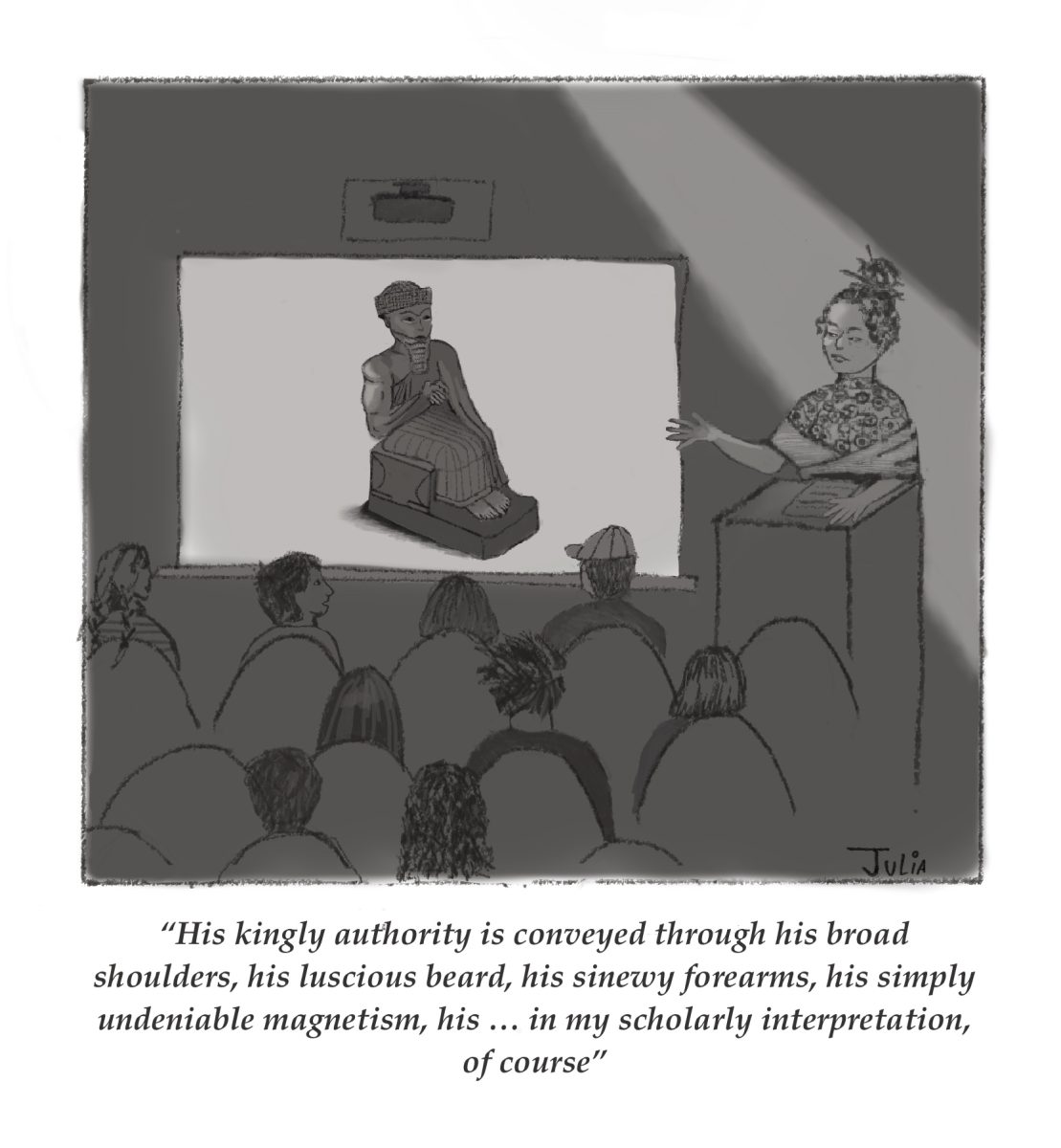On November 11, 2018, the Black Student Union (BSU) hosted a town hall in Griffin 3. What we originally intended to be a discussion on housing and the upcoming Davis Center renovations turned into the most radically political space I have ever seen at the College. We contrasted the fear of white supremacists being allowed to speak on campus if the College adopted the Chicago principles with the shortage of adequate institutional support and affinity housing for students of color and queer students. Students expressed feeling as though Campus Safety and Security officers automatically assume Black and Brown students to be suspect and, after a student recounted an incident of being pulled to the ground by an officer, I imagined what it would be like for “Black students [at Williams] to be in spaces that are made for us where people cannot arbitrarily call the police on us.”
At one point, in response to comments about the microaggressions, feelings of tokenization and isolation many minoritized students have experienced in entries, I said, “Thank God I found Rice House, because I think that’s the only reason I was able to survive.” We could have just as easily been conversing about the lack of affinity housing or the multiple hate crimes that have occurred on campus during my time here because, in many ways, Rice House is structurally connected to all of these issues.
Rice House is a part of the legacy of Black student activism at the College. As a result of Demand #12 of the Afro-American Society’s 1969 occupation of Hopkins Hall, the basement in Mears House was given to Black students as an autonomous space on campus where we could feel welcomed, supported and comfortable. Our original housing was disrupted when the College reapportioned Mears House into offices and moved the African, Black and Caribbean groups to Rice House in 1983, which had been a co-op since 1981. This move occurred during the same two-year period that a cross was burned on the lawn of Perry House, the BSU’s office was ransacked and President John W. Chandler and many Black students received threatening phone calls.
This move significantly altered the prospect of affinity housing at the College. The original placement of the BSU in Mears House gave us proximity to first-year housing, dining services and the center of campus. Still, Rice House is the closest the College has come to affinity housing and safe spaces for Black students, though there have been multiple movements for affinity housing at the College and alumni regularly remind us that there have been numerous attempts to “take” Rice House. Although, the threat to “take” Rice House seems to be mitigated for the time being, and students welcome the long overdue renovations, the struggle to maintain Rice has been decades long. I personally believe the deterioration of Rice House comes from that building carrying the burden of trying to provide all of the institutional support Black students have demanded over the decades but have yet to fully receive. That, and decades of delayed care.
Rice House, though it is in desperate need of repair, is proof that there is beauty in struggle. Black culture and Black identities across time and space are created, preserved and restored through the act of gathering. Rice House is the only pseudo-autonomous Black space on campus where we can consistently and freely do this. In that historic house, we work, we cook, we converse, we congregate, we praise, we dance, etc., ad infinitum. Dozens of students study in the Alana Haywood library on the second floor each week. Numerous organizations cook, serve and eat food together regularly to mitigate the homesickness many of us have here. Each week in Rice, whose walls are saturated with Black culture, groups host meetings where we digest and critique our experiences at the College, process current events and distract ourselves from the chaos. Rice House is home to Black Restoration Days, food festivals, collaborative joint meetings, career panels and cooking events for students and alumni during Homecoming. Frequently, Sankofa, NBC, Ritmo, BSU, SOCA and members of the general Black community utilize the space on weekends as an alternative to other campus parties, which do not feel welcoming to all minoritized students. The list of ways Rice House has been vital to me and other Black folk here goes on.
In some ways, this op-ed is meant to connect the struggle to maintain Rice House over the past three decades to other struggles on campus. In other ways, this op-ed serves as a preservation of history. Above all, this is a love letter to Rice House, to the Power of Black students and to my communities. I could not have survived this place without y’all.
Rocky Douglas ’19 is an economics major and Africana studies concentrator from Houston, Texas.




